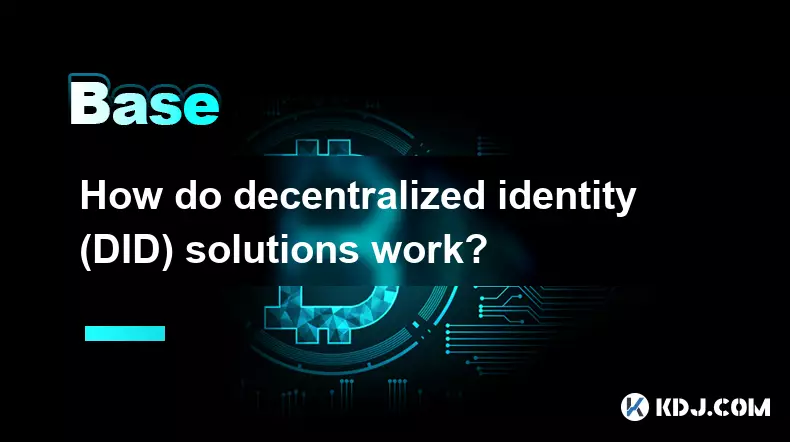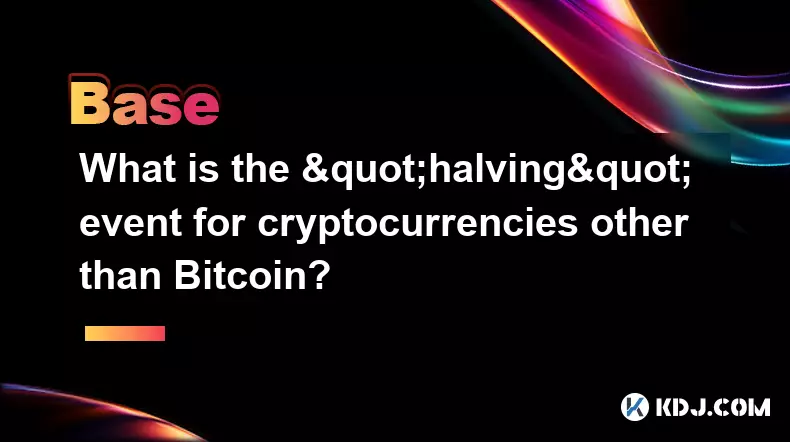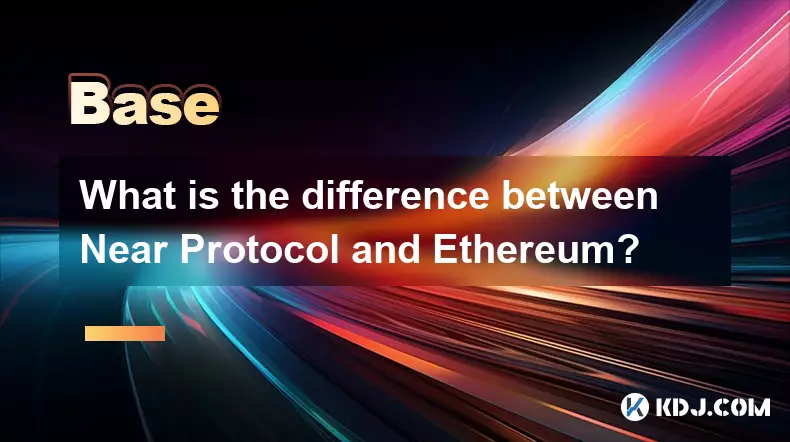-
 bitcoin
bitcoin $111743.690167 USD
0.54% -
 ethereum
ethereum $3950.699791 USD
0.55% -
 tether
tether $1.000164 USD
-0.01% -
 xrp
xrp $2.611685 USD
2.58% -
 bnb
bnb $1122.616845 USD
1.30% -
 solana
solana $193.462394 USD
-0.26% -
 usd-coin
usd-coin $0.999872 USD
-0.03% -
 dogecoin
dogecoin $0.196092 USD
-1.61% -
 tron
tron $0.296693 USD
-0.41% -
 cardano
cardano $0.652995 USD
-0.60% -
 hyperliquid
hyperliquid $44.316120 USD
12.98% -
 chainlink
chainlink $17.906269 USD
0.05% -
 ethena-usde
ethena-usde $0.999193 USD
-0.02% -
 stellar
stellar $0.326600 USD
1.70% -
 bitcoin-cash
bitcoin-cash $513.235984 USD
1.57%
How does sharding improve blockchain performance? At what cost?
Sharding enhances blockchain performance by allowing parallel transaction processing across shards, but it increases complexity and introduces security risks.
Apr 06, 2025 at 04:00 pm

Sharding is a technique used in blockchain technology to enhance the performance and scalability of a network. By dividing the blockchain into smaller, manageable pieces called shards, the system can process multiple transactions in parallel, significantly increasing throughput. However, this approach comes with its own set of challenges and costs. In this article, we will explore how sharding improves blockchain performance and the associated costs.
What is Sharding in Blockchain?
Sharding is a method of partitioning a blockchain's database into smaller segments, known as shards. Each shard contains a subset of the blockchain's data and can process transactions independently. This allows for parallel processing, which can dramatically increase the number of transactions the network can handle per second.
In traditional blockchains like Bitcoin and Ethereum, every node on the network must process and store every transaction, which can lead to bottlenecks and scalability issues. Sharding addresses these problems by allowing different nodes to focus on different shards, thereby distributing the workload more efficiently.
How Does Sharding Improve Blockchain Performance?
Sharding improves blockchain performance primarily through two mechanisms: parallel processing and reduced node workload.
Parallel Processing: By dividing the blockchain into shards, each shard can process transactions independently. This means that multiple transactions can be processed simultaneously across different shards, leading to a higher transaction throughput. For example, if a blockchain is divided into 100 shards, it can potentially process 100 times more transactions per second than a non-sharded blockchain.
Reduced Node Workload: In a sharded blockchain, nodes are responsible for processing and storing data from only a subset of the network. This reduces the computational and storage requirements for individual nodes, allowing more nodes to participate in the network. A larger number of nodes can lead to a more decentralized and resilient network.
The Costs of Implementing Sharding
While sharding offers significant performance improvements, it also introduces several challenges and costs that need to be carefully managed.
Increased Complexity: Implementing sharding adds complexity to the blockchain architecture. Developers must design systems to manage cross-shard communication and ensure data consistency across different shards. This requires sophisticated protocols and can lead to increased development and maintenance costs.
Security Risks: Sharding can potentially introduce new security vulnerabilities. Since each shard operates independently, a malicious actor might attempt to compromise a single shard to disrupt the entire network. To mitigate this risk, sharded blockchains often implement additional security measures, such as cross-shard validation and random shard assignment.
Interoperability Challenges: Ensuring seamless interaction between different shards is crucial for the overall functionality of the network. This requires robust protocols for transaction routing and data synchronization. Developing and maintaining these protocols can be resource-intensive.
Resource Requirements: While sharding reduces the workload on individual nodes, it also requires additional resources to manage the overall network. For example, a sharded blockchain might need more sophisticated consensus mechanisms and additional infrastructure to handle cross-shard transactions.
Examples of Sharding in Practice
Several blockchain projects have implemented or are exploring sharding to improve their performance.
Ethereum 2.0: Ethereum is transitioning to a new version known as Ethereum 2.0, which includes a sharding mechanism. Ethereum's sharding will divide the network into 64 shards, each capable of processing its own set of transactions. This is expected to significantly increase Ethereum's transaction throughput and reduce congestion on the network.
Zilliqa: Zilliqa is a blockchain platform that has already implemented sharding. It uses a technique called shard-based parallel processing to achieve high transaction rates. Zilliqa's network is divided into multiple shards, each processing transactions independently, which allows the platform to handle thousands of transactions per second.
Near Protocol: Near Protocol is another blockchain project that uses sharding to improve scalability. It employs a technique called Nightshade, which divides the network into shards that can process transactions in parallel. Near Protocol's sharding approach is designed to support high throughput while maintaining decentralization and security.
The Trade-offs of Sharding
Implementing sharding involves balancing the benefits of increased performance against the associated costs and challenges. The key trade-offs include:
Performance vs. Complexity: While sharding can significantly improve transaction throughput, it also increases the complexity of the blockchain system. This complexity can lead to higher development and maintenance costs.
Scalability vs. Security: Sharding can enhance scalability by allowing more transactions to be processed in parallel. However, it also introduces new security risks that must be managed through additional measures, which can be resource-intensive.
Decentralization vs. Efficiency: Sharding can reduce the workload on individual nodes, potentially allowing more nodes to participate in the network and increasing decentralization. However, managing a sharded network requires additional infrastructure and resources, which can impact efficiency.
Frequently Asked Questions
Q: Can sharding be implemented on any blockchain?A: Sharding can be implemented on many blockchains, but it requires significant changes to the underlying architecture. Not all blockchains are designed to support sharding, and implementing it can be complex and resource-intensive. Projects like Ethereum and Zilliqa have successfully implemented sharding, but others may face technical challenges in doing so.
Q: How does sharding affect the decentralization of a blockchain?A: Sharding can potentially enhance decentralization by reducing the workload on individual nodes, allowing more nodes to participate in the network. However, managing a sharded network requires additional infrastructure and resources, which can impact the overall decentralization if not carefully managed.
Q: What are the main challenges in implementing sharding?A: The main challenges in implementing sharding include increased complexity, security risks, interoperability issues, and resource requirements. Developers must design robust protocols to manage cross-shard communication and ensure data consistency, while also implementing additional security measures to protect the network from potential vulnerabilities.
Q: How does sharding compare to other scalability solutions like layer 2 scaling?A: Sharding and layer 2 scaling are both approaches to improving blockchain scalability, but they operate at different levels. Sharding involves partitioning the main blockchain into smaller segments to process transactions in parallel, while layer 2 scaling involves offloading transactions to secondary networks or protocols. Sharding can offer higher throughput but is more complex to implement, while layer 2 solutions can be easier to deploy but may not achieve the same level of scalability.
Disclaimer:info@kdj.com
The information provided is not trading advice. kdj.com does not assume any responsibility for any investments made based on the information provided in this article. Cryptocurrencies are highly volatile and it is highly recommended that you invest with caution after thorough research!
If you believe that the content used on this website infringes your copyright, please contact us immediately (info@kdj.com) and we will delete it promptly.
- Essex Post Office, 5p Coins, and King Charles: A Royal Mint Revelation!
- 2025-10-23 10:30:16
- Waymo's Newark Airport AV Tests: Alphabet's AI Gamble Pays Off?
- 2025-10-23 10:30:16
- King Charles 5p Coins: A Royal Flush in Your Pocket?
- 2025-10-23 10:35:18
- Solana, Crypto Advisory, and Forward Industries: A New York Minute on the Future of Finance
- 2025-10-23 08:51:22
- MAGACOIN: Ethereum Whales Dive into the Hottest Presale of 2025
- 2025-10-23 08:51:22
- Kadena's End of the Road? KDA Token Plummets Amid Project Abandonment
- 2025-10-23 08:55:34
Related knowledge

How do decentralized identity (DID) solutions work?
Oct 14,2025 at 11:36pm
Understanding Decentralized Identity in the Blockchain Ecosystem1. Decentralized identity (DID) solutions are built on blockchain networks, allowing i...

What is the "halving" event for cryptocurrencies other than Bitcoin?
Oct 25,2025 at 12:19pm
Decentralized Exchanges Gain Momentum in 20241. Decentralized exchanges (DEXs) have seen a surge in trading volume as users prioritize control over th...

What is the difference between Near Protocol and Ethereum?
Oct 15,2025 at 08:01am
Near Protocol and Ethereum: Core Architectural Differences1. Near Protocol operates on a sharded blockchain architecture known as Nightshade, which al...

What does it mean for code to be "open source" in crypto?
Oct 12,2025 at 01:54pm
Understanding Open Source in the Cryptocurrency Ecosystem1. In the context of cryptocurrency, open source refers to software whose code is publicly ac...

What is the purpose of a "testnet"?
Oct 12,2025 at 09:01am
Understanding the Role of Testnets in Blockchain Development1. A testnet serves as a parallel version of a blockchain network, designed specifically f...

How to avoid phishing scams in crypto?
Oct 13,2025 at 06:18pm
Understanding Common Crypto Phishing Tactics1. Cybercriminals frequently use fake websites that mirror legitimate crypto exchanges or wallet platforms...

How do decentralized identity (DID) solutions work?
Oct 14,2025 at 11:36pm
Understanding Decentralized Identity in the Blockchain Ecosystem1. Decentralized identity (DID) solutions are built on blockchain networks, allowing i...

What is the "halving" event for cryptocurrencies other than Bitcoin?
Oct 25,2025 at 12:19pm
Decentralized Exchanges Gain Momentum in 20241. Decentralized exchanges (DEXs) have seen a surge in trading volume as users prioritize control over th...

What is the difference between Near Protocol and Ethereum?
Oct 15,2025 at 08:01am
Near Protocol and Ethereum: Core Architectural Differences1. Near Protocol operates on a sharded blockchain architecture known as Nightshade, which al...

What does it mean for code to be "open source" in crypto?
Oct 12,2025 at 01:54pm
Understanding Open Source in the Cryptocurrency Ecosystem1. In the context of cryptocurrency, open source refers to software whose code is publicly ac...

What is the purpose of a "testnet"?
Oct 12,2025 at 09:01am
Understanding the Role of Testnets in Blockchain Development1. A testnet serves as a parallel version of a blockchain network, designed specifically f...

How to avoid phishing scams in crypto?
Oct 13,2025 at 06:18pm
Understanding Common Crypto Phishing Tactics1. Cybercriminals frequently use fake websites that mirror legitimate crypto exchanges or wallet platforms...
See all articles










































































